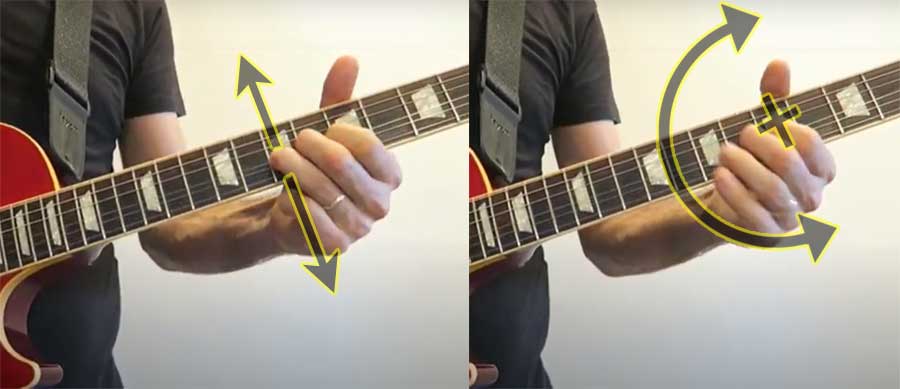Have you ever listened to a soulful guitar solo and been captivated by those shimmering, expressive bends? That’s the magic of vibrato, a technique that separates a flat performance from a truly captivating one.
Today’s lesson unlocks the secrets of vibrato on guitar! We’ll break down the different types, the mechanics behind achieving that perfect wobble, and exercises to get you sounding like a pro.


Unveiling the Vibrato Mystery
Vibrato is a subtle, rapid fluctuation in pitch that adds depth and emotion to your notes. It’s like adding a little wiggle to your voice while singing.
There are two main types of vibrato on guitar:
- Wrist Vibrato: This is the most common type, achieved by gently rocking your entire wrist back and forth while fretting a note. The movement translates to slight changes in string tension, creating the vibrato effect.
- Finger Vibrato: This involves a slightly more nuanced movement where you wiggle the fingertip that’s fretting the note. It creates a faster, tighter vibrato compared to wrist vibrato.
Mastering the Wobble: Your Vibrato Practice Plan
Now, let’s get down to practice! Here’s a step-by-step approach to mastering vibrato:
- Start Slow: Begin by holding down a single note on a lower string (like the E or A string). Focus on gently rocking your wrist back and forth, aiming for a smooth, controlled wobble in the pitch.
- Listen Close: Pay attention to the sound. The vibrato should be subtle, not a wide bend. Experiment with the speed and intensity of your wrist movement until you achieve a pleasing wobble.
- Incorporate the Finger: Once comfortable with wrist vibrato, try incorporating finger vibrato. Focus on a slight wiggle of the fretting fingertip while maintaining the wrist movement.
- Apply it to Scales and Chords: Once you’ve got the basic mechanics down, practice vibrato on simple scales and chords. Start slow, focusing on applying vibrato to individual notes within the scale or chord progression.
- Gradually Increase Speed: As your control improves, gradually increase the speed of your vibrato. Remember, faster isn’t always better. Aim for a smooth, even wobble that enhances the emotion of the music.
Bonus Tip: Patience is Key!
Developing a good vibrato takes time and practice. Don’t get discouraged if it doesn’t sound perfect right away. Keep practicing consistently, and you’ll be adding that expressive shimmer to your solos in no time!
Ready to take your guitar playing to the next level? Enroll in our guitar lessons today and unlock the secrets of vibrato and many more exciting techniques

